|
20. Nintendo 64DD
Year : 1999
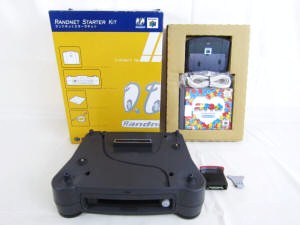 |
19. FM Towns Marty
Year : 1993
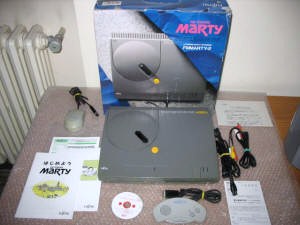 |
18. Sony PSX DESR-XXXX
Year : 2003
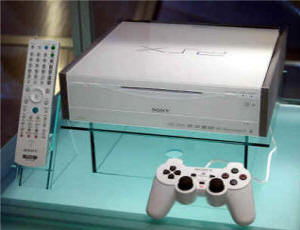 |
|
Though system peripherals were not to be initially included in this countdown, the Nintendo 64DD will be an exception. Released on
December 1, 1999 as an add-on for the Nintendo 64, the 64DD was doomed from the start. Technology had passed up the capabilities
that it offered (see the PS2 and Xbox) and development for this system ground to a halt. Only nine (9) titles were ever released for
this Japanese exclusive. Even the promising RANDnet online gaming service could not save this sinking ship. |
The Fujitsu Company decided to make an attempt to penetrate the console games market by taking their popular FM TOWNS line of computers
and adding in some special components to create a stand alone video game console. The result was the FM Towns Marty, the world’s
first 32-bit video game console. This is a system that is not hard to find, but the cost to purchase one is steep. Another
rare bird is the FM Towns Car Marty – a portable version that you could plug into the cigarette lighter and enjoy gaming on the road. |
The Sony PSX is a high priced multimedia device designed to be the center of your home entertainment experience. Driven by the
"heart and soul" of the Playstation 2 console, the Sony PSX has all the features found in the Playstation 2 console (Progressive Scan DVD
playback, Music CD playback, Playstation 2 and PlayStation games) combined with full DVR capabilities (and the XMB found in the PS3). The
DESR-5100 model was the only edition released in the cool Satin Silver finish (hence this is the desirable model). |
|
17. Aiwa Mega-CD
Year : 1994
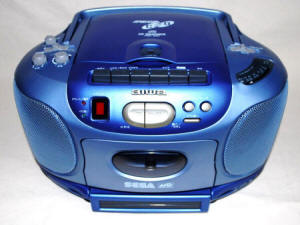 |
16. Pioneer LaserActive w/PACs
Year : 1993
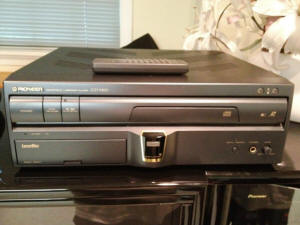 |
15. Gakken Compact Vision
Year : 1983
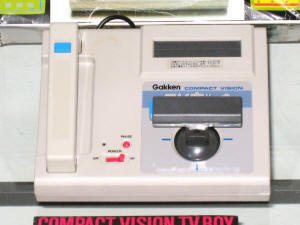 |
|
The Aiwa Mega-CD is one of the coolest third party clones that has ever been released. The system consists of two parts – the top CD
player and the bottom docking station that provided the Sega Mega Drive/CD interface/capabilities (except sound). This rare bird was
a Japanese exclusive and will lighten your pocketbook quite a bit (if you can find one). |
Everyone is familiar with the Pioneer LaserActive, but to have one with all of the add-on PAC units is a true feat for any collector.
The Sega PAC is rather common, but the NEC unit is the exact opposite. Add to the that the Karaoke and the Computer Interface PACs
and you are looking at some serious cash. The rare 3D goggles are another expected expenditure. |
Gakken was a popular manufacturer of arcade and handheld games throughout the 1980s. In 1983, Gakken decided to try their hand at
the home console market with the Gakken Compact Vision. This is definitely one strange bird – the controller is built into the
system itself and is definitely one of the oddest designs ever created. This system never saw the light of day outside of the
Japanese market. |
|
14. Nichibutsu My Vision
Year : 1983
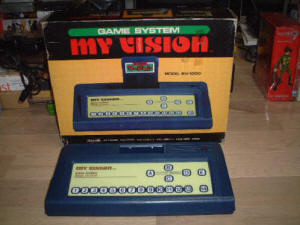 |
13. Sharp Famicom Titler AN-510
Year : 1989
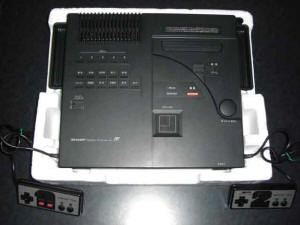 |
12. Commodore 64 Game System
Year : 1990
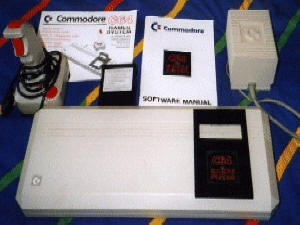 |
|
Another console released only in Japan. Arcade game maker Nichibutsu wanted to take a chance on the console market. In 1983 they
released the KH-1000 better known as "My Vision" (manufactured by Kanto Electronics). The My Vision carts were all based on board
games. Its biggest focus was on the game Mahjong. The My Vision also provided an external port for Mahjong expansion
cartridges. This is another system that never took off and owes its inclusion on this list due to its obscurity. |
Having the distinction of being the only Nintendo Famicom system that delivered true RGB video output, this console is truly a behemoth.
In addition to being a full gaming machine, the Titler incorporating video editing capabilities (subtitles, credits, etc.) complete with a
writing pad and stylus. You could plug your video camera directly into the back of the system and edit to your heart’s content.
This oddity is definitely a prized possession in any collector’s display. |
In 1990, Commodore set their attentions on the videogame console market. They followed the same concept as other computer companies
(ala the Amstrad GX400). Their new system was called the Commodore 64GS (GS = Game System) and was released exclusively in Europe.
The unit was basically just a repackaged Commodore 64 computer. It did not fair well at all since technology had already passed it
by at the time of its release. |
|
11. Tomy Pyuuta Jr.
Year : 1984
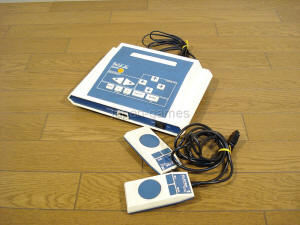 |
10. Bandai Pippin @WORLD
Year : 1995
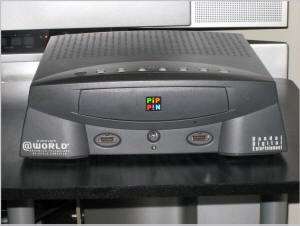 |
09. Funtech Super A'Can
Year : 1995
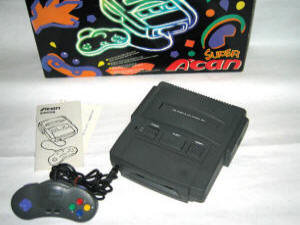 |
|
The Tomy Pyuuta Jr. was the dedicated console release of the Tomy Pyuuta, a hybrid computer released in Japan in 1983. The original
Pyuuta had a moderate amount of success, enough so to have models released in Europe (Grandstand Tutor) and in North America (Tomy Tutor).
This is another Japanese exclusive and is a tough find due to its limited release as well as its unpopularity. Expect to import this
if you are able to find one at all. |
In 1995, Apple Computer Inc. joined the console foray by finishing the development of a system based on a scaled down version of their
System 7 OS. Named the Pippin, Apple followed the 3DO Company's lead by licensing this technology to an outside manufacturer –
Bandai Digital Entertainment. The Bandai Pippin @WORLD is the North American release of this console. It is estimated that
only 5,000 of these were sold during its limited lifespan. |
In 1995, Funtech Entertainment Corporation released the first original gaming system in Taiwan – the Super A'Can. Very few of these
systems were sold and it has been reported that Funtech Entertainment Corporation lost $6 million USD in this venture. This is a
hard one to acquire since it does have a pretty strong cult following due to the obscurity of this system. |
|
08. APF Imagination Machine
Year : 1978
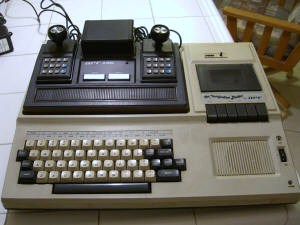 |
07. Entex Adventure Vision
Year : 1982
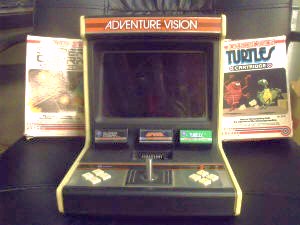 |
06. Casio PV-1000
Year : 1983
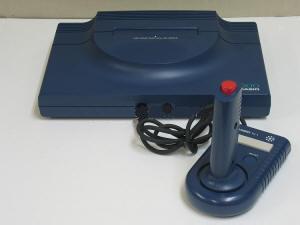 |
|
In late 1978, a company by the name of APF Technologies released a simple cartridge based system similar to other consoles on the market
named the APF M1000. The console itself could then be "docked" to the MPA-10 to create a hybrid computer. The combined unit
became the APF Imagination Machine and provided the BASIC program language, keyboard, 9K of RAM
(expandable to 17K), color
graphics and a built in cassette recorder. Finding a complete system is extremely difficult due to the fact that these are cherished
by both video game and computer enthusiasts. |
Released in 1982 to a lukewarm reception, the Adventure Vision had only about a year lifespan on the market before it was pulled.
The consoles that were sold were fragile and troublesome, so few have survived to today. This makes it difficult to find a working
example and nearly impossible to find one for any price. It’s estimated that only 10,000 of the consoles were made. Few
other consoles have the star power of the Adventure Vision. If you want to add an Adventure Vision to your collection, you had better be ready to break out the checkbook. |
Casio of Japan, known for their line of calculators, decided to cash in on the console videogame craze. In 1983 Casio produced the
PV-1000 console. This Japanese exclusive was technically well below average compared to the competition (Sega SG-1000 and the Nintendo Famicom) when
it debuted and met its demise quickly. This is an extremely rare item and only recommended for the ultra-serious console collector.
This console lacks the fanfare of the some earlier entries, but is actually more difficult to find due to its limited run. |
|
05. Capcom CPS Changer
Year : 1994
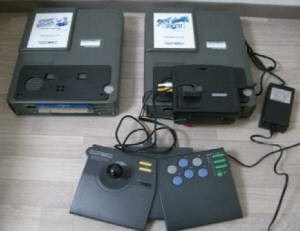 |
04. Bandai Super Vision 8000
Year : 1979
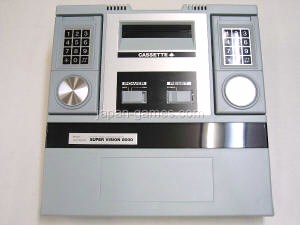 |
03. Daewoo Zemmix CPG-120
Year : 1991
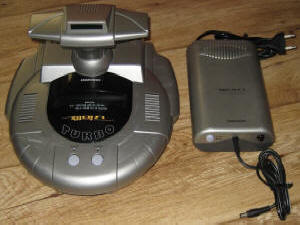 |
|
In 1994, Capcom decided to follow SNK’s lead in the Neo Geo AES and released the CPS Changer. Based entirely upon existing arcade
hits, this system produced excellent quality and game play. This system is a new addition to a very lucky member of the VGCL team –
98PaceCar. Only 11 titles were released for this Japanese system. This system is extremely pricey – expect to be competing
with arcade collectors as well when trying to acquire this treasure. |
Notable game developer Bandai was very involved in hardware development and manufacturing beginning in 1977 with its popular line of
TV-Jack pong based consoles. Building on their mild success in this arena, the Bandai Super Vision 8000 debuted in 1979 and was the
very first programmable game cartridge system released in Japan (before Sega and Nintendo). This system is one of the least known
amongst collectors, but its place in history is unquestioned and is truly a milestone in any collection. |
Korean based Daewoo produced the Zemmix CPG-120 console (Zemmix in Korean means "It's Fun") that was the pinnacle of its line of MSX based
systems. This console was basically a MSX computer in a console casing. It was an NTSC based machine capable of playing MSX
cartridge games. All Zemmix systems are expensive and rare, but this 'UFO' anomaly is a true grail for the hardware enthusiast.
Be prepared to dig out and sell any gold fillings you may have – this console is a serious investment. |
|
02. Katz Media Player KMP 2000
Year : 1996
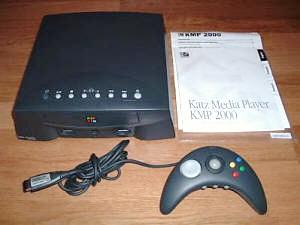 |
01. RDI Halcyon
Year : 1985
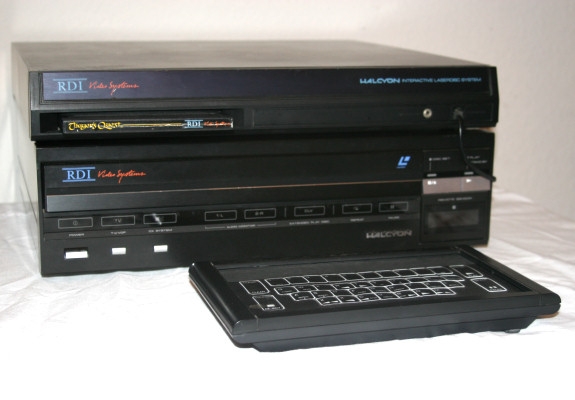 |
|
|
The Katz Media Player is the European release of the Bandai Pippin ATMARK (itself a rather obscure system). 98PaceCar and I have
never seen one of these for sale in all of our combined years of collecting hardware. This may be a questionable entry to this list
since there is some speculation if this system was actually sold for retail. I can not even guess what it would take to acquire one
of these beasts. If you were married to Jessica Biel, expect to pimp her out for a good two years straight to pay for this peach. |
For the console collector, there are no systems that will match the rarity of the RDI Halcyon. If you are fortunate enough to locate
one, it will be the centerpiece of any collection. Little is known about the true production of the system and it is a non-confirmed
rumor that the system was even available at retail. Current information tells us that no more than 10 units were built for the
investors of the company, all of them by hand. It doesn't get any better than this folks – welcome to the true holy grail of video
game hardware!!
|
|
 DISCUSS
DISCUSS